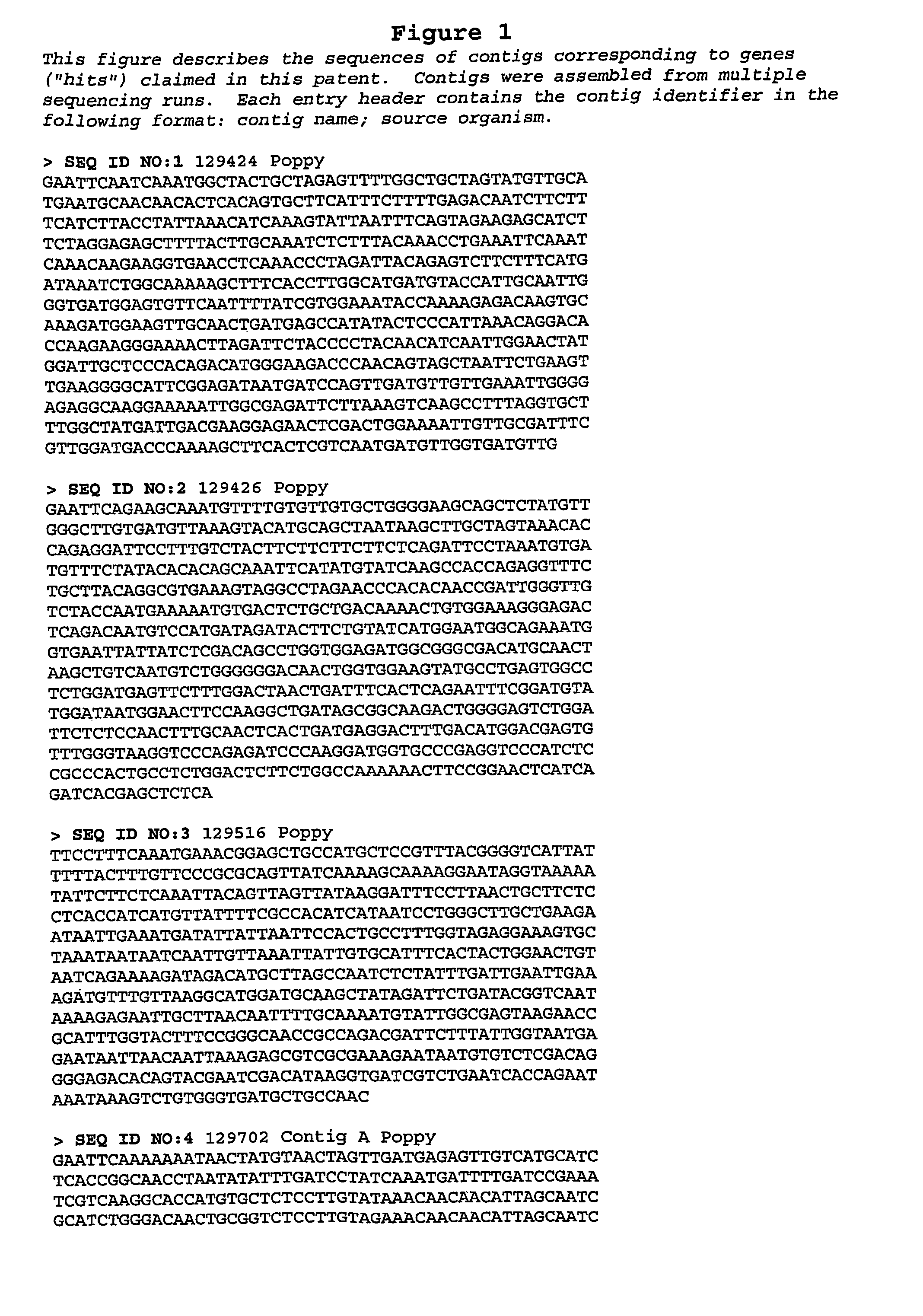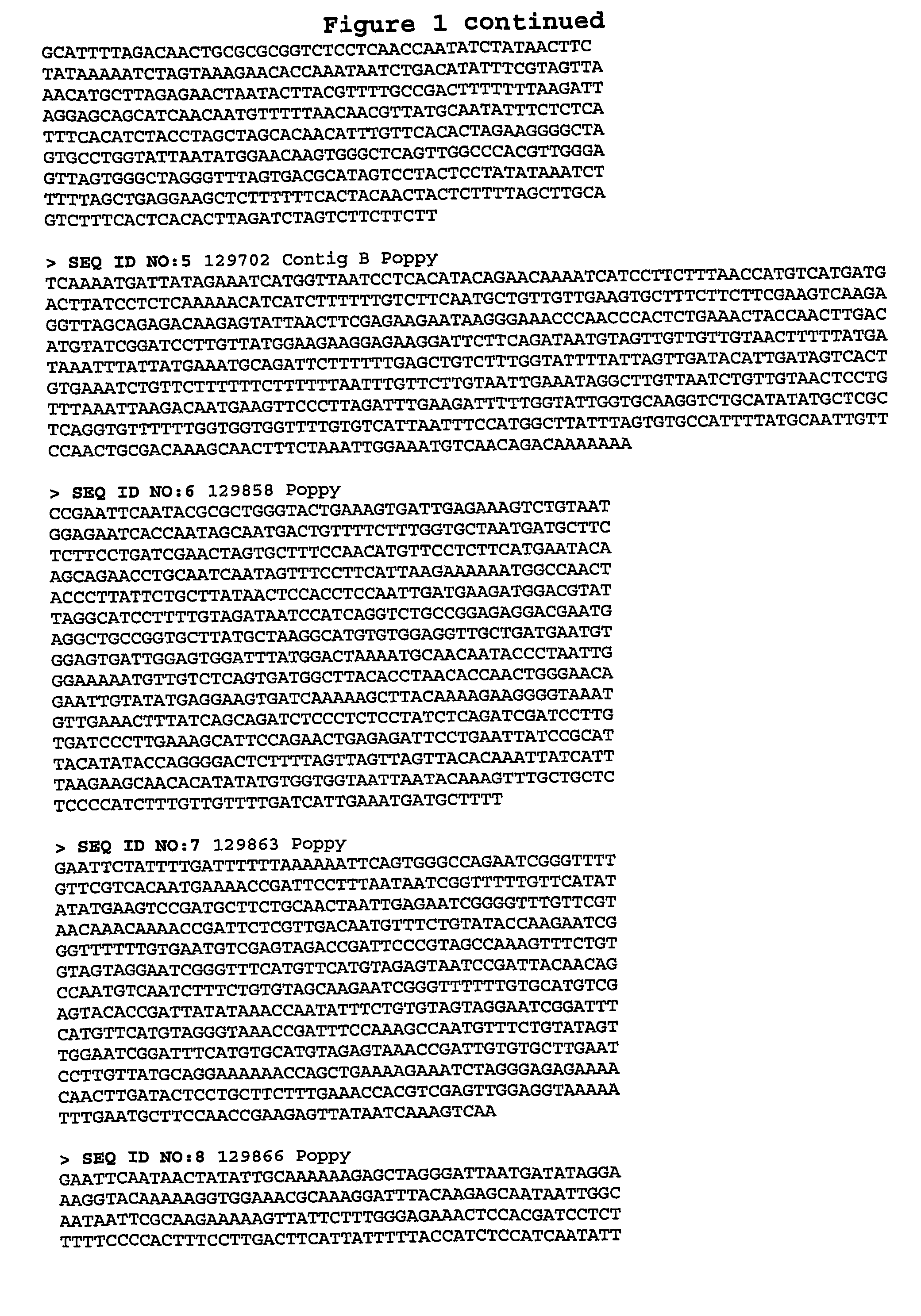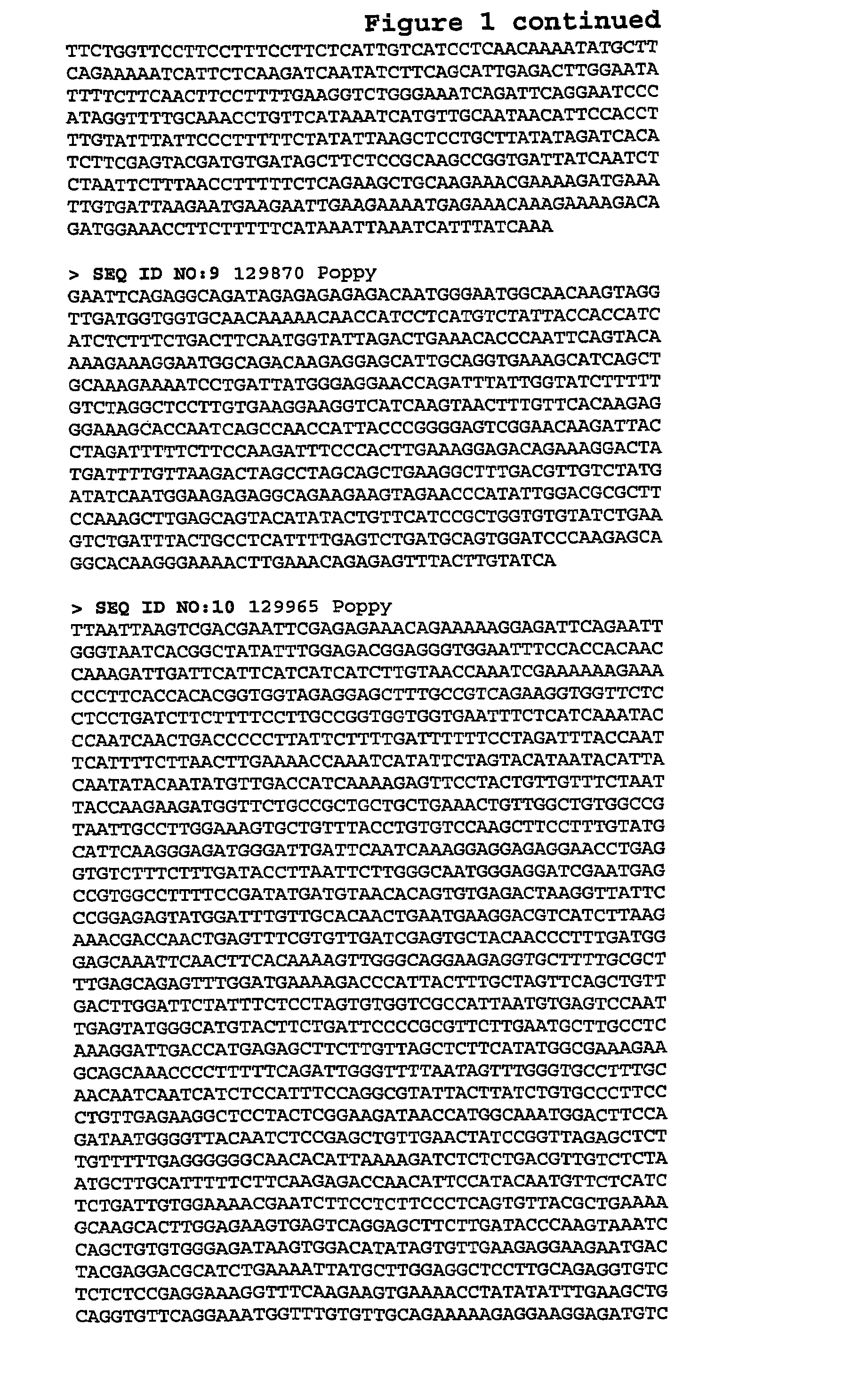Nucleic acid compositions conferring herbicide resistance
a technology of nucleic acid and herbicide resistance, which is applied in the field of nucleic acid and amino acid sequences, can solve the problems of not meeting all of these criteria, affecting crop species as well as their efficacy, and unable to selectively kill herbicides
- Summary
- Abstract
- Description
- Claims
- Application Information
AI Technical Summary
Benefits of technology
Problems solved by technology
Method used
Image
Examples
example 1
Poppy cDNA Library Construction in GENEWARE® Vectors
[0220]A. Plant Growth. A wild population of Papaver rhoeas resistant to auxin (2,4-dichlorophenoxy)acetic acid (2,4-D) was identified from a location in Spain and seed was collected. The seed was germinated and yielded a morphologically heterogeneous population. Leaf shape varied from deeply to shallowly indented. Latex color in some individuals was pure white when freshly cut, slowly changing to light orange then brown. Latex in other individuals was bright yellow or orange and rapidly changed to dark brown upon exposure to air. A single plant (PR4) with the white latex phenotype was used to generate the library.
[0221]B. RNA extraction. Approximately 1.5 g of leaves and stems were collected and frozen on liquid nitrogen. The tissue was ground to a fine powder and transferred to a 50 mL conical polypropylene screw cap centrifuge tube. Ten mL of TRIZOL reagent (Life Technologies, Rockville, Md.) was added and vortexed at high speed ...
example 2
Colony Array
[0226]A. Colony Array—Picking. Ligations were transformed into E. coli DH5α cells and plated onto 22×22cm Genetix “Q Trays” prepared with 200 ml agar, Amp100. A Qbot device (Genetix, Inc., Christchurch, Dorset UK) fitted with a 96 pin picking head was used to pick and transfer desired colonies into 384-well plates according to the manufacturers specifications and picking program SB384.SC1, with the following parameters:
Source
[0227]Container: Genetix bioassay tray
[0228]Color: White
[0229]Agar Volume: 200 ml
Destination
[0230]Container: Hotel (9 High)
[0231]Plate: Genetix 384 well plate
[0232]Time In Wells (sec): 2
[0233]Max Plates to use: # of 384 well plates
[0234]1st Plate: 1
[0235]Dips to Inoculate: 10
[0236]Well Offset: 1
Head
[0237]Head: 96 Pin Picking Head
[0238]First Picking Pin: 1
[0239]Pin Order: A1-H1, H2-A2. . . (snaking)
[0240]Sterilizing
[0241]Qbot Bath #1
[0242]Bath Cycles: 4
[0243]Seconds in Dryer: 10
[0244]Wait After Drying: 10
[0245](approximate picking time: 8 hrs / 20,000 ...
example 3
DNA Preparation
[0310]Plasmid DNA was prepared in a 96-well block format using a Qiagen Biorobot 9600 instrument according to the manufacturer's specifications. In this 96-well block format, 900 μL of cell lysates was transferred to the Qiaprep filter and vacuumed 5 min at 600 mbar. Following this vacuum, the filter was discarded and the Qiaprep Prep-Block was vacuumed for 2 min at 600 mbar. After adding buffer, samples were centrifuged for 5 min at 600 rpm (Eppendorf benchtop centrifuge fitted with 96-wp rotor) and subsequently washed ×2 with PE buffer. Elution was carried out for 1 minute, followed by a 5 min centrifugation at 6000 rpm. Final volume of DNA product was approximately 75 μL.
PUM
| Property | Measurement | Unit |
|---|---|---|
| temperatures | aaaaa | aaaaa |
| volumes | aaaaa | aaaaa |
| volume | aaaaa | aaaaa |
Abstract
Description
Claims
Application Information
 Login to View More
Login to View More - R&D
- Intellectual Property
- Life Sciences
- Materials
- Tech Scout
- Unparalleled Data Quality
- Higher Quality Content
- 60% Fewer Hallucinations
Browse by: Latest US Patents, China's latest patents, Technical Efficacy Thesaurus, Application Domain, Technology Topic, Popular Technical Reports.
© 2025 PatSnap. All rights reserved.Legal|Privacy policy|Modern Slavery Act Transparency Statement|Sitemap|About US| Contact US: help@patsnap.com



